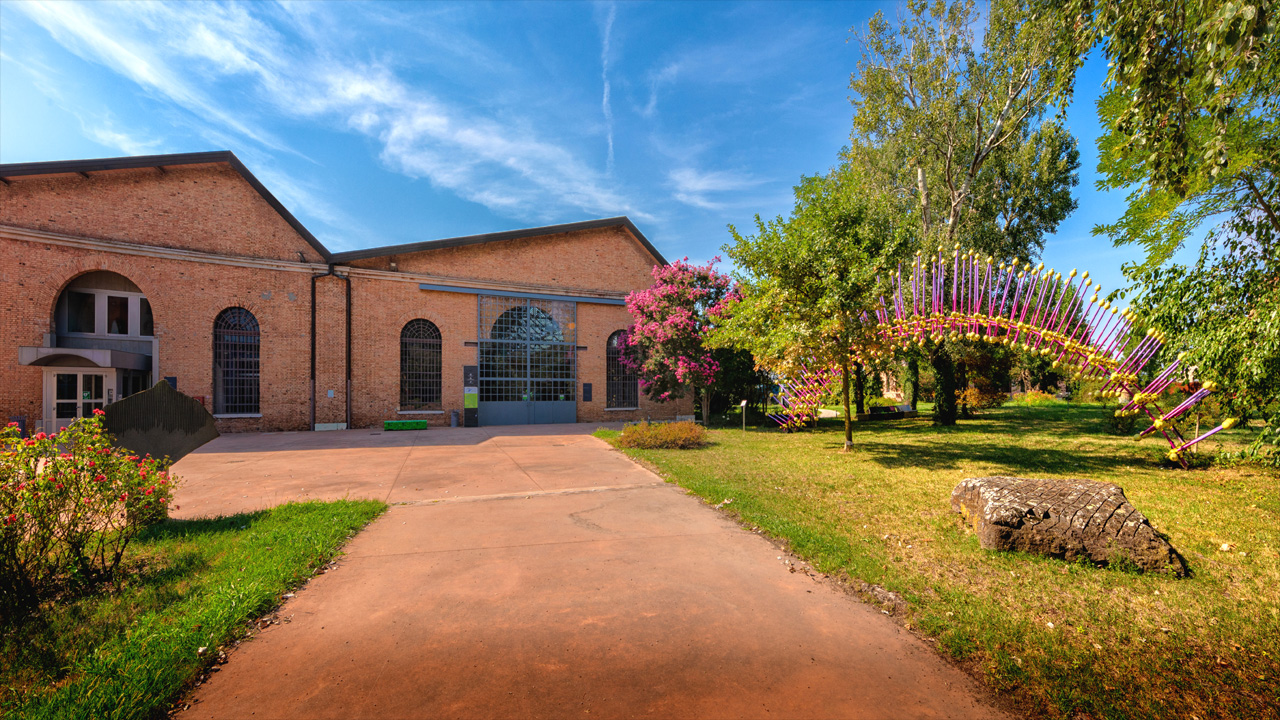
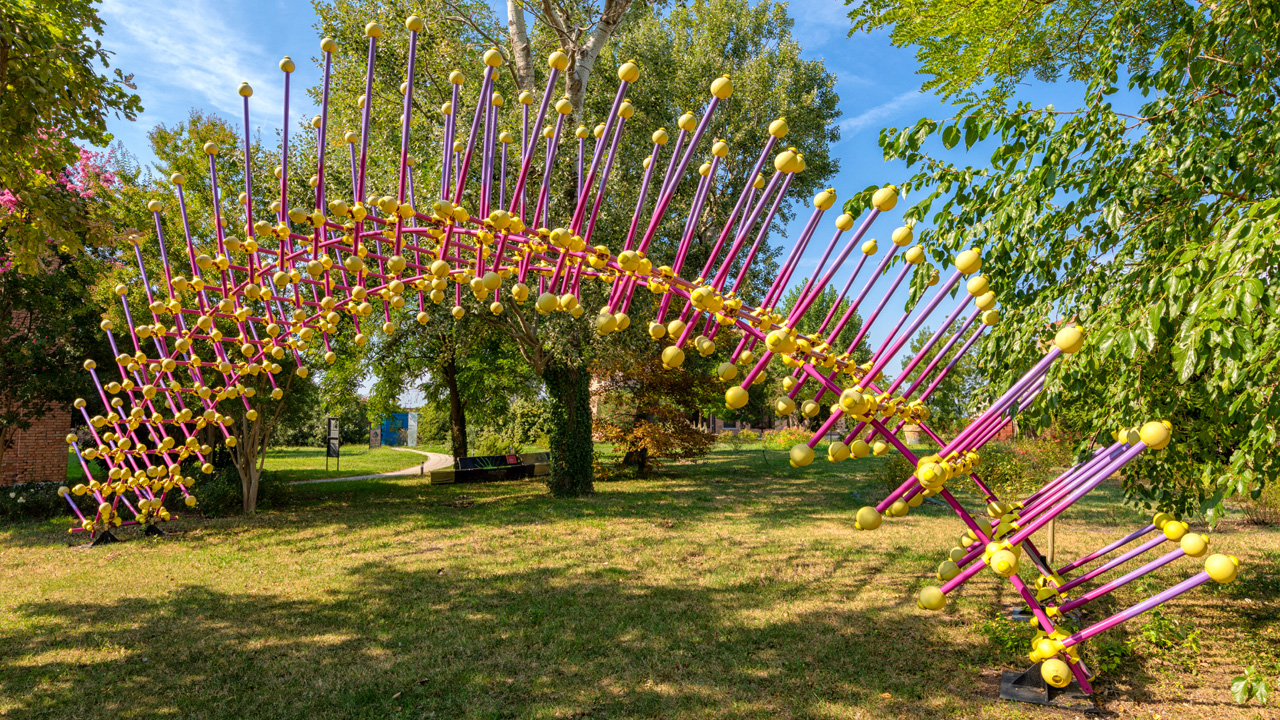
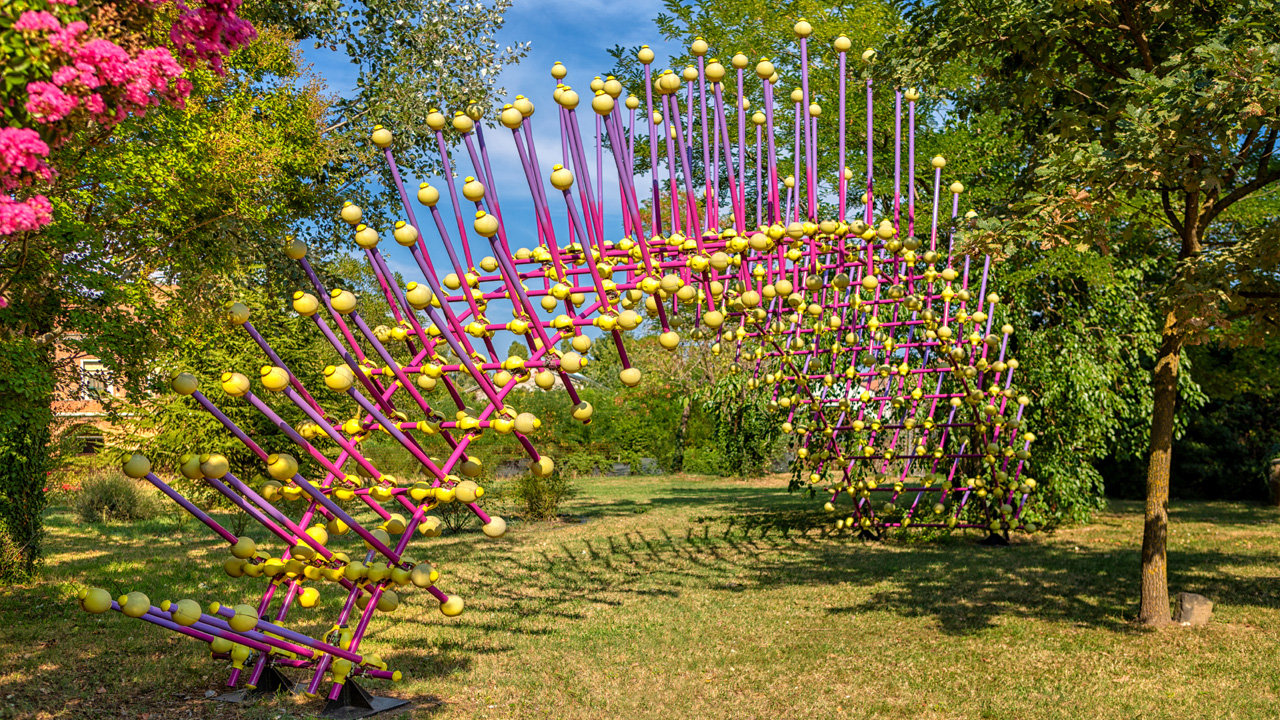
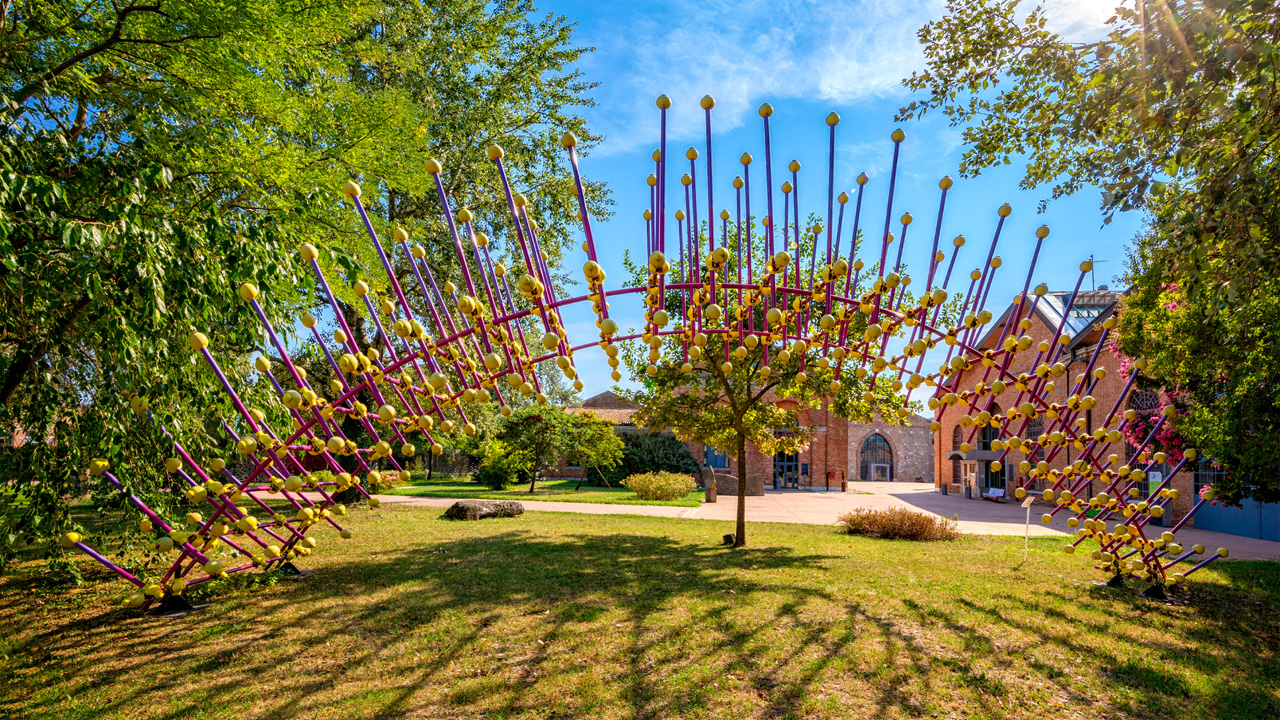
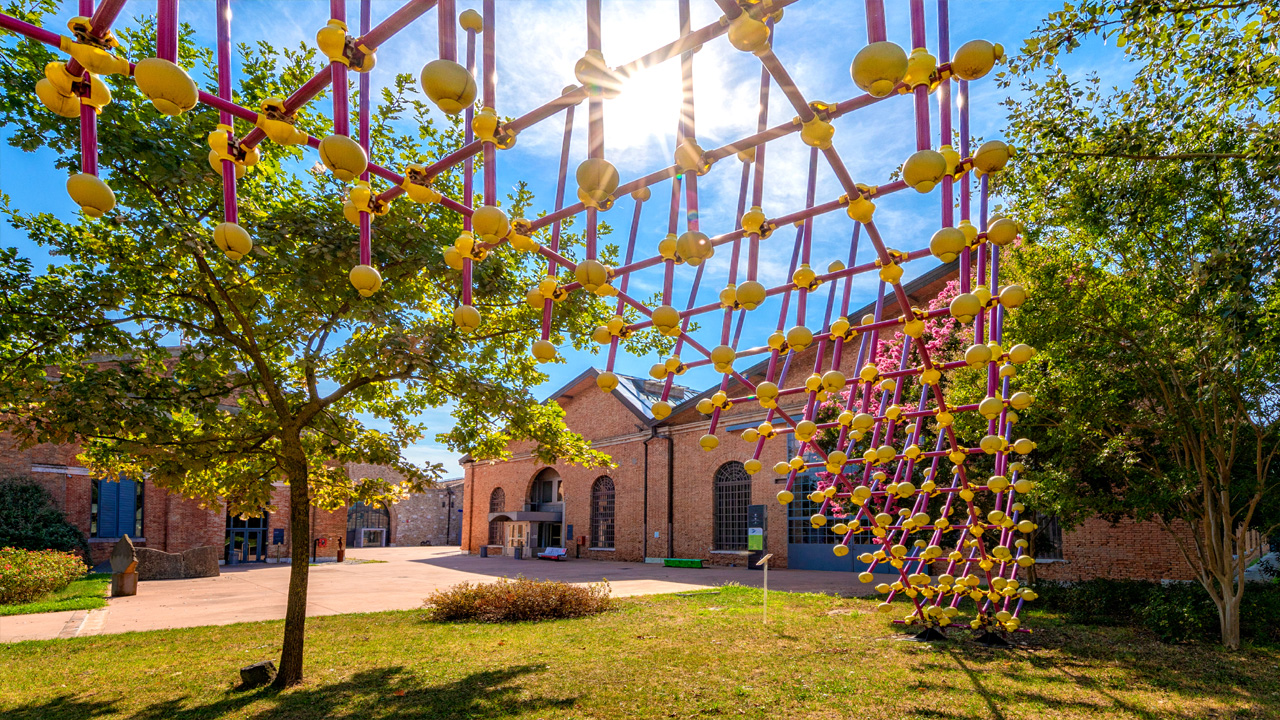
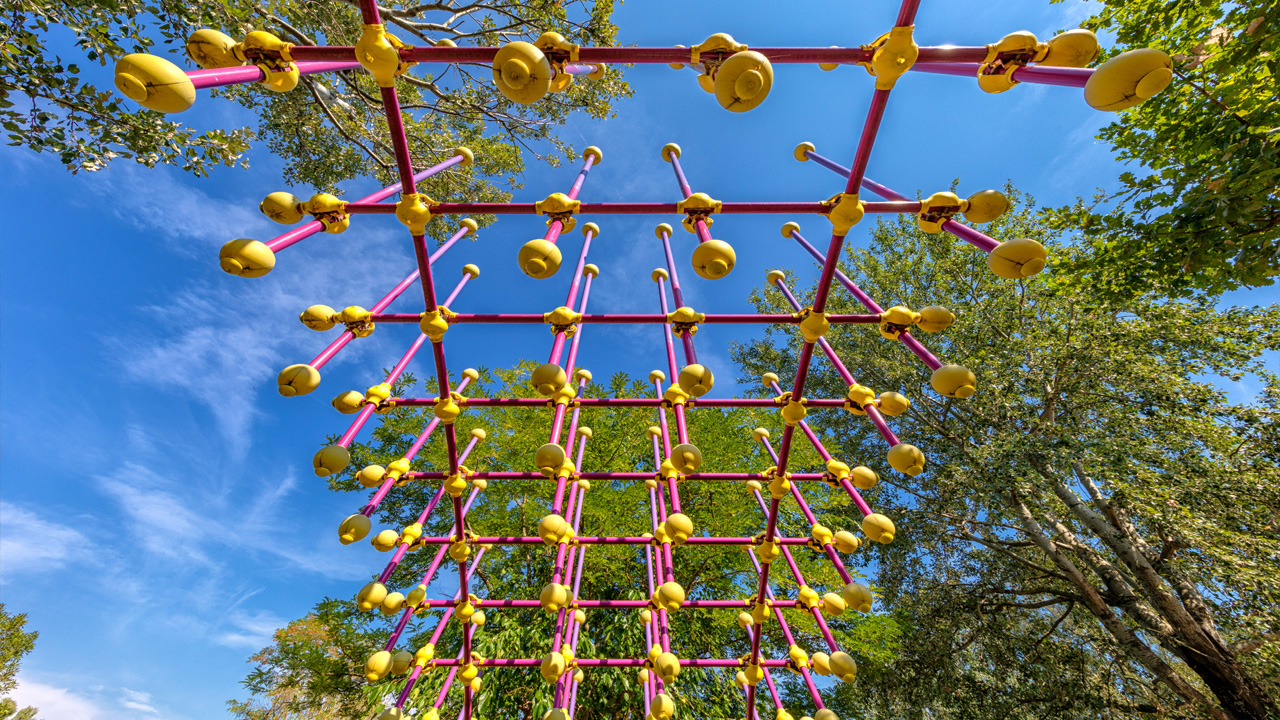
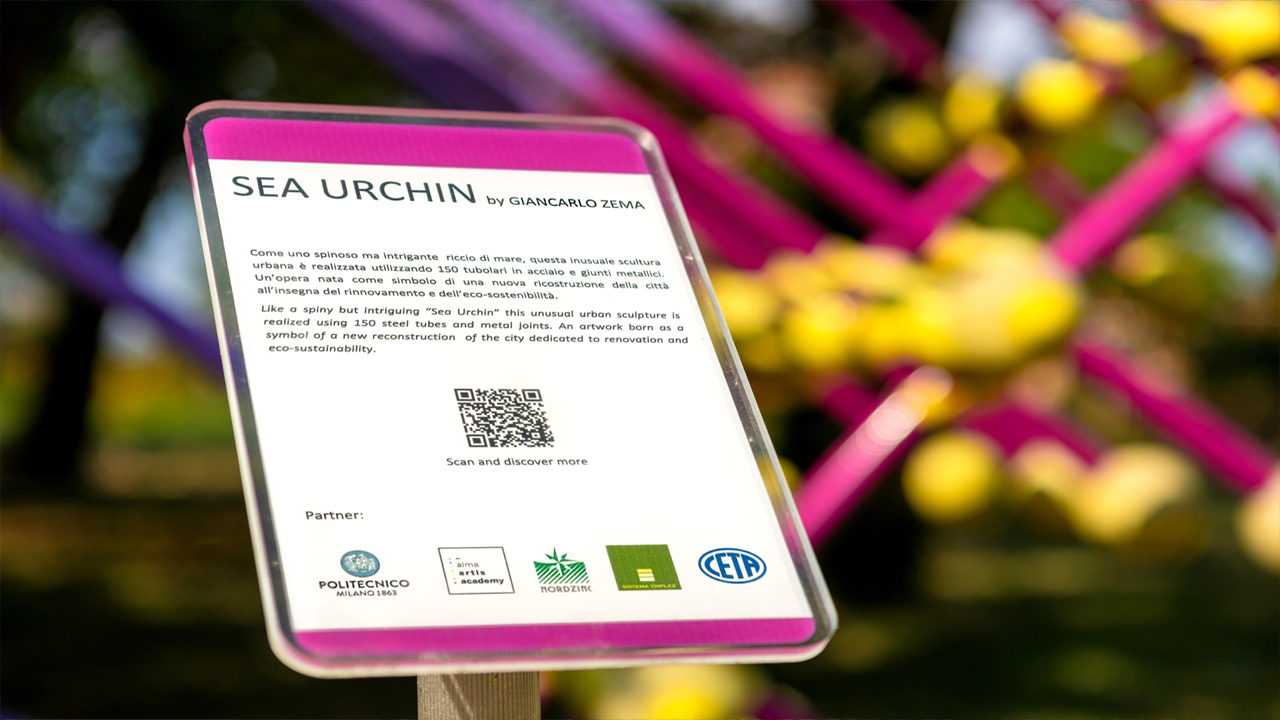
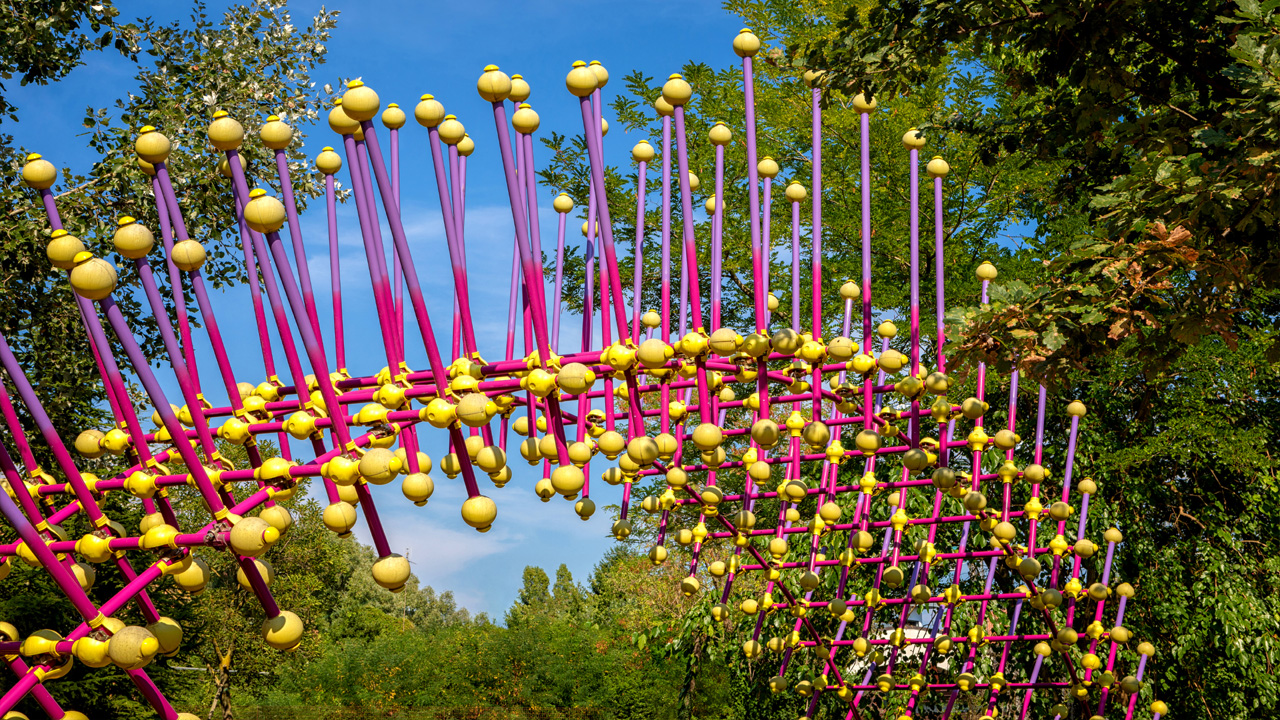
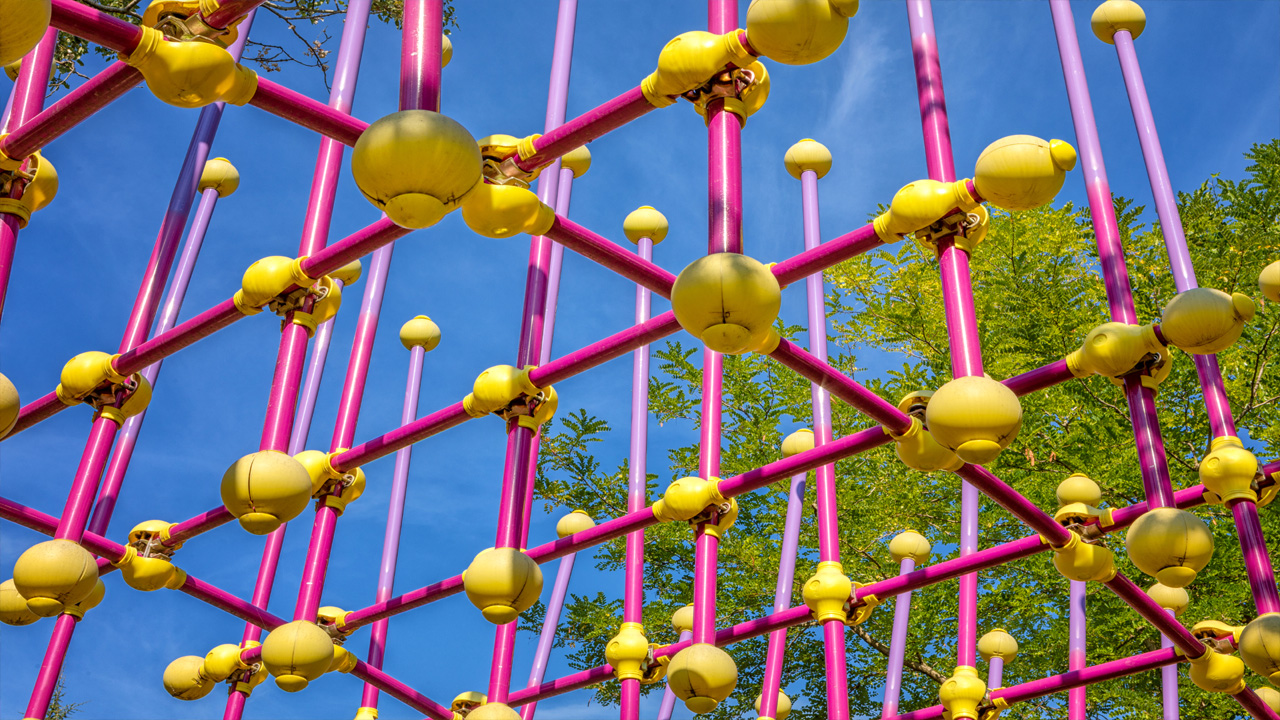
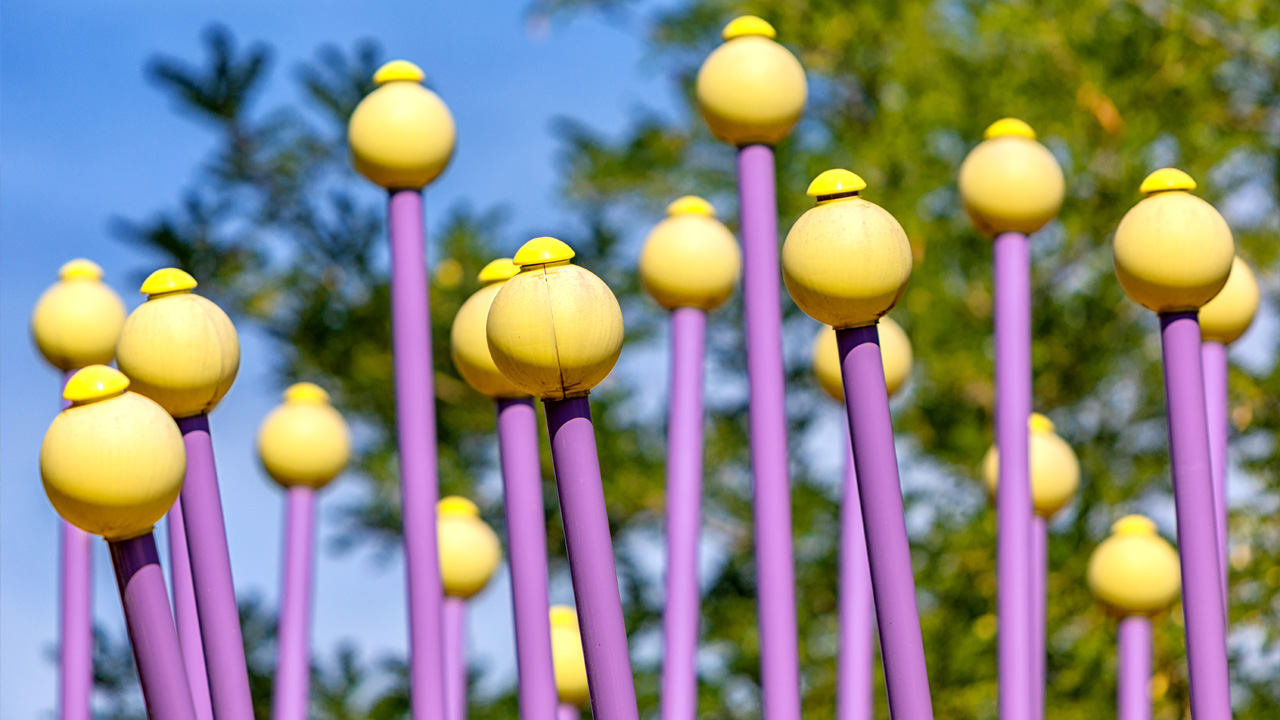
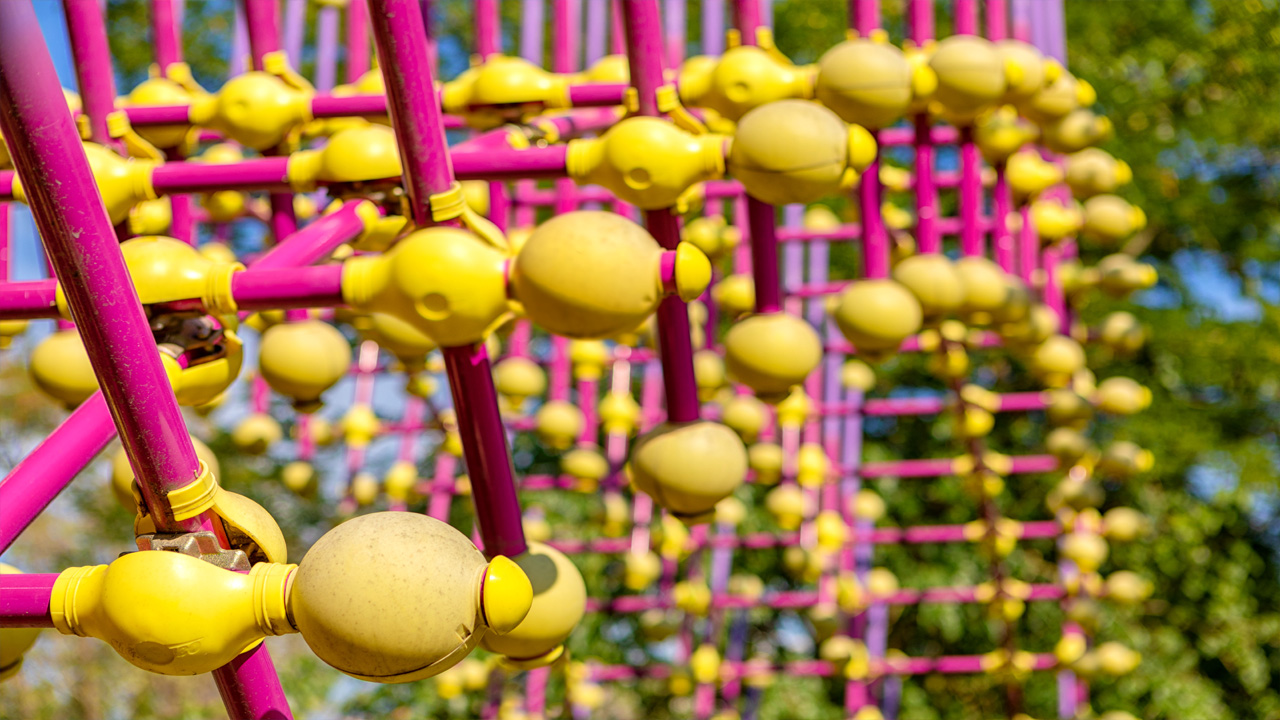
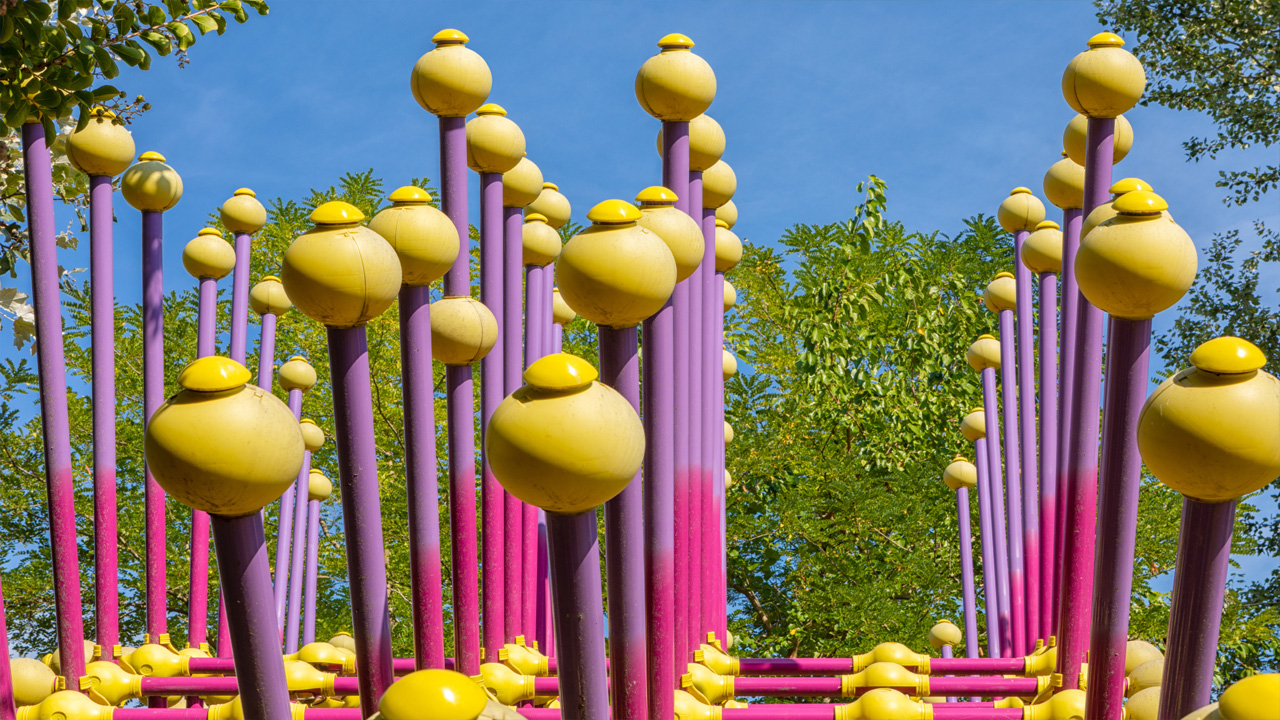
Sea Urchin
Steel Art InstallationDate: 2016
Location: Venice (Italy)
Project: Giancarlo Zema Design Group
Client: Venice Architecture Biennial
Consultants: Ceta + Nord Zinc
Status: Realized
Like a spiny but intriguing “Sea Urchin” this unusual urban sculpture designed by the architect Giancarlo Zema, is realized using 150 stainless steel tubes and related plastic joints. A new artistic way to transform steel elements in a colorful cane structure. An artwork born as a symbol of a new reconstruction of the city dedicated to the renovation and the eco-sustainability. It is installed at the 15th Venice Architecture Biennial with the scientific partnership of the Politecnico di Milano and the cultural-artistic partnership of the Alma Artis Academy. The artwork is realized thanks to the technical partnership of Nord Zinc SpA and CETA SpA the leader companies in the construction field. The Sea Urchin is on show in the gardens of the Spazio Thetis, Arsenale Nord, among the sculptures of famous artists such as Pinuccio Sciola, Michelangelo Pistoletto and Jean Fabre, all into the Gangcity events programme – Gangcity documents the phenomenon of urban clusters devoid of any kind of legal controls, in order to enable processes of reappropriation and the care of private and public spaces. The project aims to reveal the reciprocal influence between the violence and geography of cities, paying particular attention to the gangs as primary groups born in, and spread throughout the urban ghettos, predominantly through the involvement of teenagers. Encouraging a mix of disciplines and methodologies, Gangcity will be staging an international symposium and a photography exhibition in addition to a variety of events and scientific workshops. The narrative tone that emerges from the scientific analysis of the gangs complements the narration of social scientists, architects, urbanists and artists, who, along with the inhabitants, are also players in the new life cycles of urban clusters. However they’ve finally been freed from gang violence through socially inclusive practices rather than repression.
